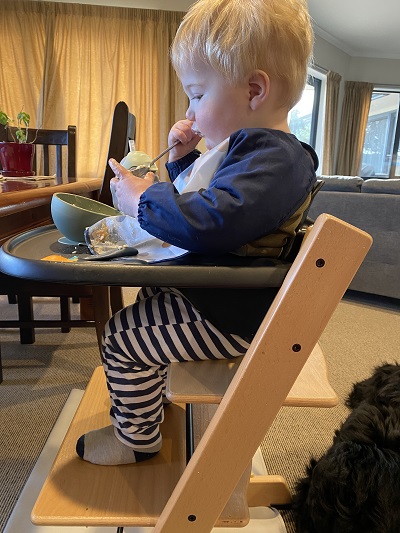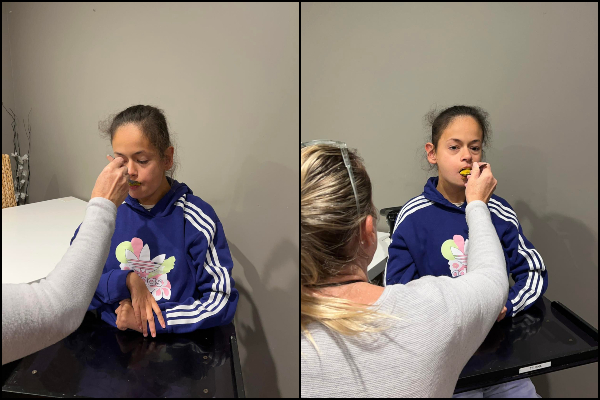Tube Feeding - How To Sit When Eating & Drinking
Tube Feeding - How To Sit When Eating & Drinking
It is important tube-fed children are in the correct position when eating and drinking. Tamariki need to sit upright with their hips, knees and ankles at 90-degree angles. This will help them coordinate the muscles needed to eat. It will also help them focus on eating, rather than keeping their bodies upright.
Key points about how to sit when eating and drinking
- it is important tube-fed children are in the correct position when eating and drinking
- tamariki need to sit upright with their hips, knees and ankles at 90-degree angles
- sitting in the right position will help your child focus on their food and control their muscles
- it also reduces the risk of them inhaling their food and drink and choking
Why is sitting in the right position important when eating?
Sitting in the right position while eating and drinking is important for tube-fed children to have a successful meal. Some tube-fed children with muscle tone and muscle weakness or who find it hard to control and manage their movements need extra care to make sure they are safe when eating and drinking.
How can sitting in the right position help my child at mealtimes?
There is a correct position for children to be in when eating. This position will give your child more energy and help them focus on eating, rather than keeping their bodies upright.
If your child is in a comfortable and stable position, they will find it easier to use the muscles needed for biting, chewing, swallowing and breathing.
Your child is at risk of inhaling their food or drink and choking if they are in an awkward, uncomfortable, or incorrect position when eating and drinking.
What is the right position for my child to be in at mealtimes?
The best position for your child to be in at mealtimes is:
- hips, knees, and ankles at 90-degree angles
- upright upper body position
- feet comfortably resting on a foot stool
- elbows able to rest comfortably on the table
How can I get my child to sit in the right position?
Some chairs, such as the Stokke Tripp Trapp and Mocka Feeding chair, can help your child sit in the right position at mealtimes.
The chairs can:
- be adjusted to create 90-degree angles at the hips, knees, and ankles
- move with your child as they grow
- allow your child to sit closer to the table
- support your child's back and feet
- allow your child to move more freely
A booster seat and/or individual footstool can also help support your child to sit in a comfortable position at mealtimes.
This image shows a young child sitting in the correct position to eat. They are sitting in a Stokke Tripp Trapp feeding chair.

How should my child sit in a wheelchair to eat and drink?
Wheelchairs provide a greater amount of support for a child than most other seats do.
But, it is still important to aim for the following:
- hips, knees and ankles at 90-degree angles (as close to as possible)
- upright upper body position
- feet comfortably resting on a foot stool
Wheelchair users tend to benefit from extra support. A tray attached to their wheelchair can also allow easier access to foods.
When a child is eating in a wheelchair it is important their hips, knees and ankles are at 90-degree angles.

How to sit when helping a tube-fed child eat and drink
Try to aim for the following when helping your tube-fed child eat and drink:
- sit in front of your child so they can clearly view the food on offer - sitting in front encourages a head forward position, rather than your child constantly turning to see where you are
- make sure you are comfortable and stable
- have all equipment and utensils within easy reach
This page last reviewed 12 November 2022.
Do you have any feedback for KidsHealth?
If you have any feedback about the KidsHealth website, or have a suggestion for new content, please get in touch with us.
Email us now